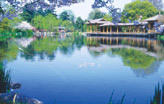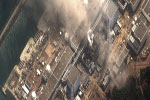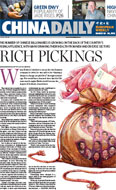Welcoming the rabbit
Updated: 2011-01-28 13:20
(China Daily European Weekly)
Singapore
Inherent dichotomy of reunion dinner
By Esther Auyong
Most still believe that Chinese New Year celebrations start on the eve of the first day of the lunar calendar. But Peter Wee, 65, begins his rituals and traditions during the Dongzhi Festival (Winter Solstice Festival). Traditionally, this is a time when families in China gather and the tangyuan (glutinous rice balls), colored pink and white, is made and eaten.
"But first, it has to be offered to our ancestors, the kitchen God and the deity of the house. Then, two tangyuan will be placed on each side of the front door," explains the businessman.
Wee, a fourth generation Peranakan - descendants of 15th and 16th century Chinese immigrants, mostly of Hokkien ancestry, who have inter-married to Malay and Indonesian spouses in the Nusantara region - has been running the two-story Katong Antique House, a part-shop, part-Peranakan museum for 30 years.
Needless to say, for him, the reunion dinner on Chinese New Year's eve is another elaborate and extremely important tradition.
"We set up the ancestral altar around 11am. We place Peranakan food like buah keluak and pongteh, fruits and wine on it. This is an act of remembering our past. The family comes together, and pays respect to our ancestors," he says.
The family then eats the same food for their reunion dinner in the evening, which, Wee says, "has to be held at home". He adds that bringing the celebration out of the home, "like how hotels and restaurants pluck families away with their convenient reunion dinner sets, with their modern food", takes away the meaning of the tradition.
By "modern food", Wee means the composition of these contemporary reunion dinners, which tend to follow culinary trends, most likely to please the taste buds of a well-traveled younger generation. The president of the Peranakan Association of Singapore cites the yu sheng, a raw fish salad that's a symbol of abundance and prosperity - a common sight during the Chinese New Year meals in Singapore - as an example. While versions of it are taught to have existed in China, the current form of yu sheng was invented and popularized in Singapore in the 1960s.
"Besides having dinner at home, it is vital that people eat traditional food," he says, lamenting that modernization has somewhat eroded the fascinating culture of the Peranakans. He observes that "young people these days are losing a sense of history and culture".
Still, he admits that "a living culture is something that's constantly changing". "What we can do is make sure there is a record of the past, of our traditions and rituals," Wee says.
Esther AuYong is a Singapore-based writer for China Daily Asia Weekly.
E-paper

City of Joy
Welcome to the 'world of smiles' where life meanders slowly.
Debate on nuclear power revived
The future is now
Common approach
Specials

When disaster strikes
We will give our readers in-depth background information on natural catastrophes.

Earthquake Hits Japan
A massive 8.8 magnitude quake hit the northeast coast of Japan on March 11,2011.

NPC & CPPCC sessions
Lawmakers and political advisers gather in Beijing to discuss major issues.
